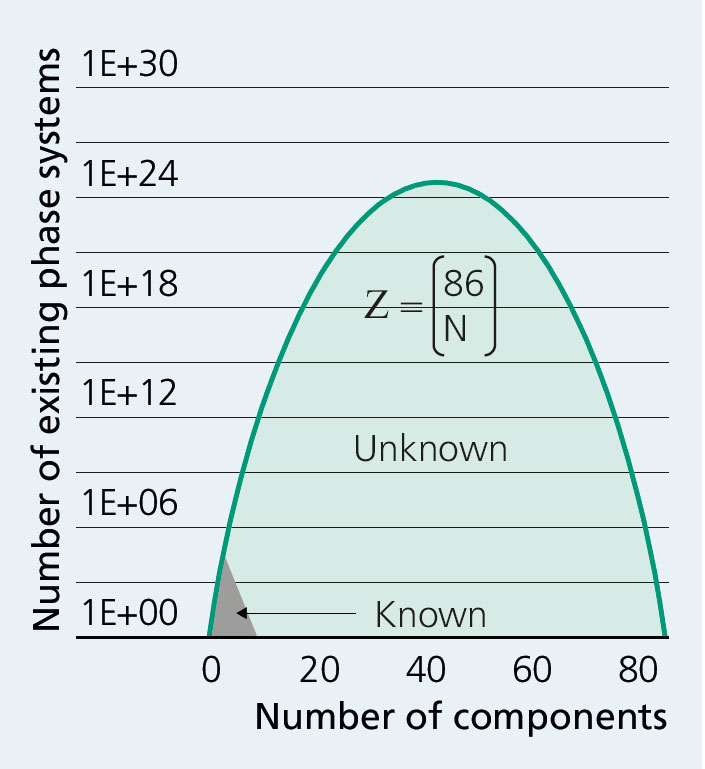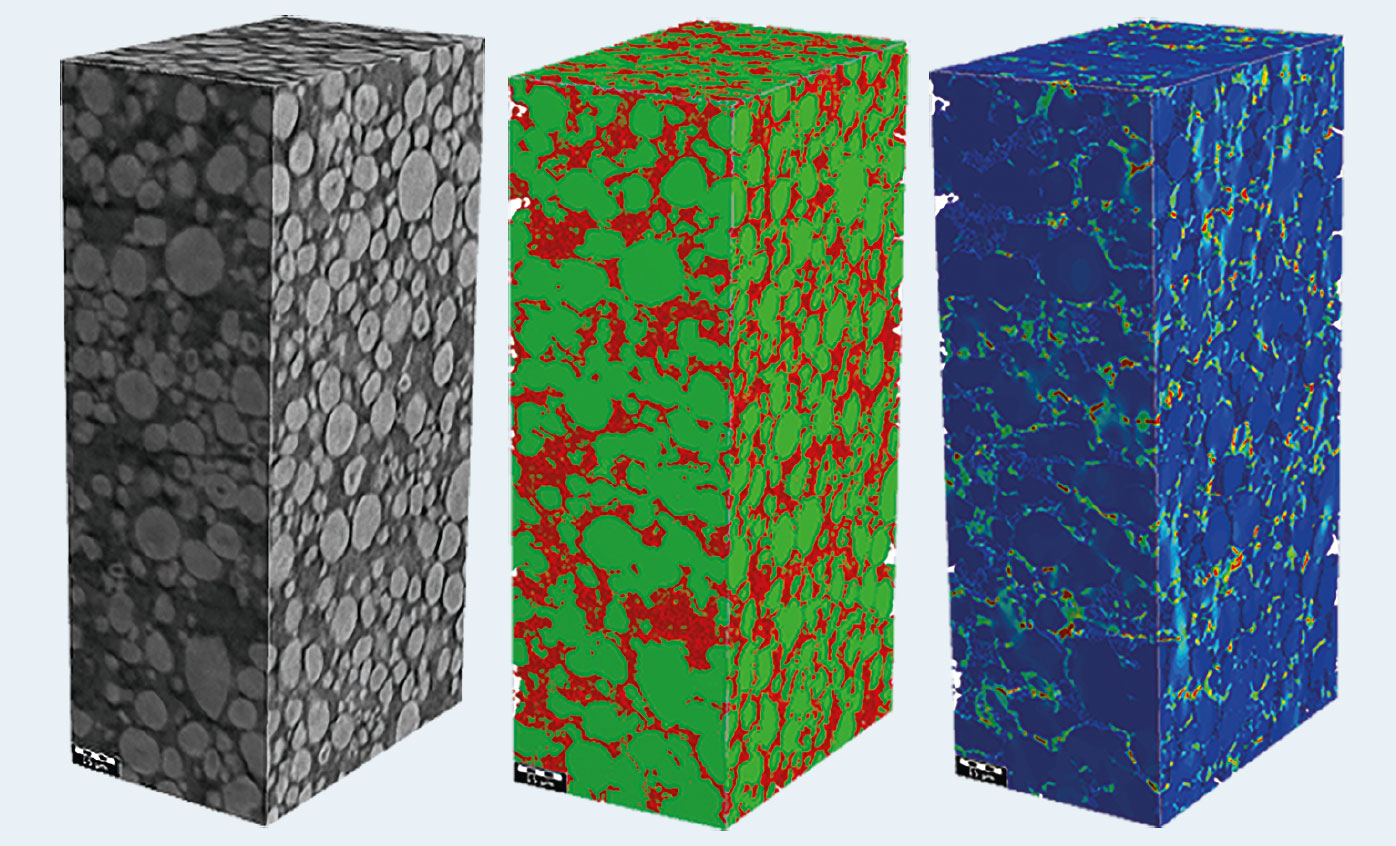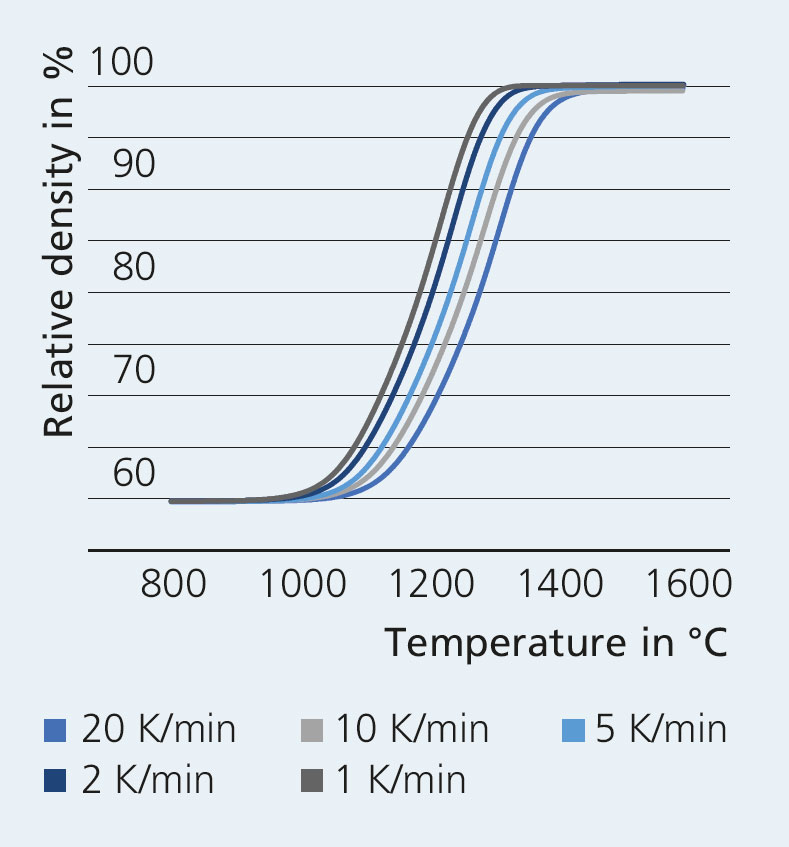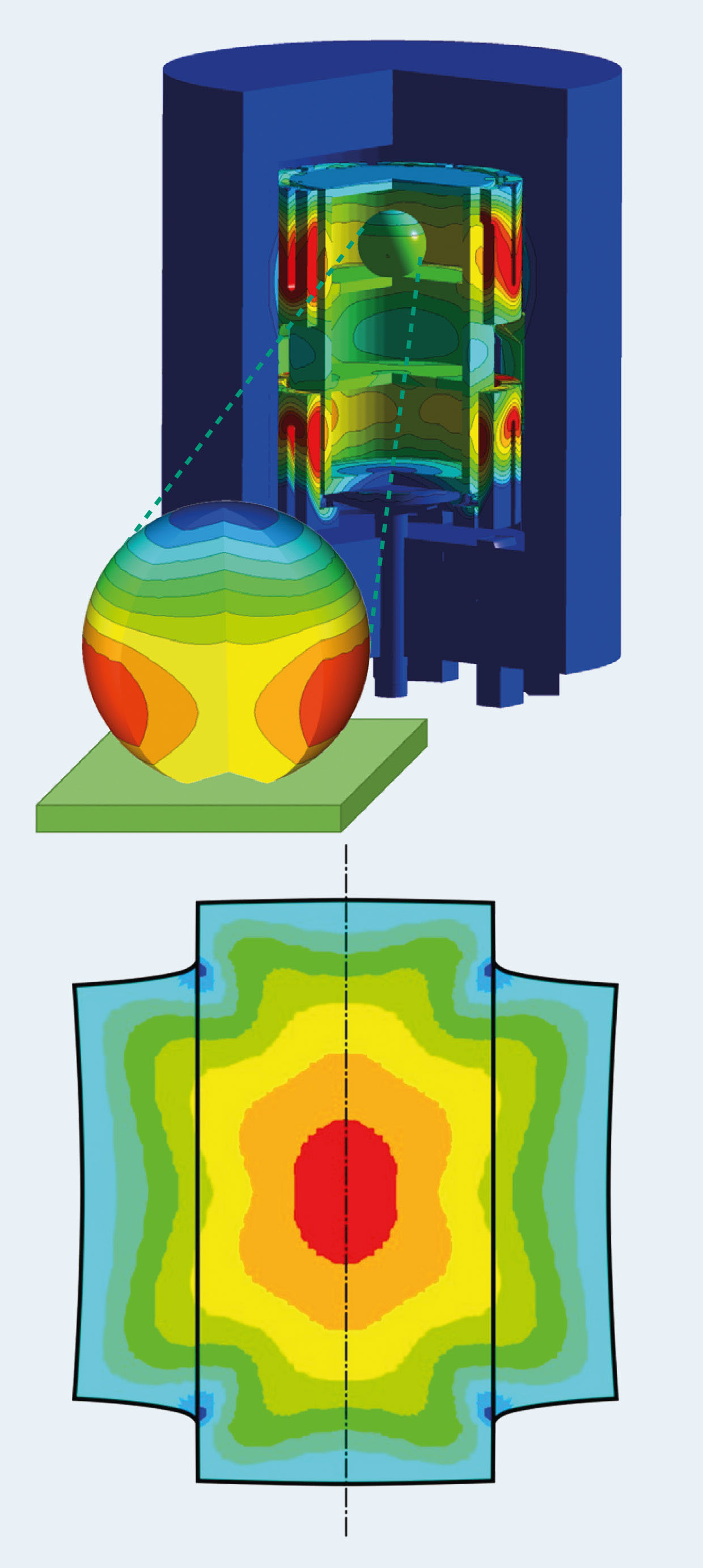
Digital materials science at Fraunhofer IKTS
Current research



Approaches to digitized materials science are set to become more and more comprehensive as advanced characterization techniques and new hardware and software for data retrieval, processing and analysis become available. This provides new instruments for developing and manufacturing materials and components based on a deep understanding of the relationships between structures and properties. Development and production processes can be performed much more effectively and reliably.
A mere look at the possibilities of material design based on stable chemical elements (top left figure) reveals the great potential afforded only when digitally supported materials development uses multiscale modeling to achieve the desired range of properties. Although the work has only just started [1–3], nearly 50 % of industrial companies put the optimization of production processes front and center of their digitization strategy, while 16 % say they focus on new materials [3].
The challenges lie in particular in the complexity of the processes, ranging from atomic sizes to microscopic and mesoscopic effects such as grain boundaries or displacements, to more macroscopic effects such as stress distributions due to temperature fields during manufacturing or machining. Adding to this, a major part of the relevant material properties depend not just on material composition and other, more accessible integral parameters, but also on rare and more extreme microstructural features, influenced by complex manufacturing conditions. Until now, such parameters have not been recorded in databases, so that in most cases only broad property intervals are available. With this kind of data basis, the possibilities of modeling and designing materials and components are very limited.
Providing production plants and whole manufacturing environments with novel instruments could open up completely new ways of developing and optimizing particularly complex processes, such as ceramic manufacturing.
If implemented successfully, this would amount to a revolution in the manufacture of ceramic components (“Digital services in analytics and non-destructive testing”, p. 22). Fraunhofer IKTS drives these efforts on two levels at once – in the retrieval, collection, preparation and interpretation of the data, as well as in the development of new sensors and measuring concepts to record them. The synergistic effects from combining extensive know-how in ceramic materials and processes with non-destructive testing and monitoring skills bring significant and specific advantages.


Furthermore, tools for evaluating data from production processes are being developed further to refine production monitoring and quality assurance.As these remarks show, the tasks are intricate and come with challenges on various levels. Therefore, Fraunhofer IKTS is focusing on the structured retrieval of measured data and their improved preparation for downstream analyses, such as modeling, among other things. A broad range of statistical and AI-based methods are used for this purpose, adapted specifically for each process.Before material properties can be modeled and production processes verified, it is necessary to gather material characteristics and statements on the microstructure in an effective way.
The material and process characterization of IKTS supplies the appropriate infrastructure and know-how for these steps. These data need to be prepared purposefully (“AI-based quantitative microstructural analysis of ceramic materials”, p. 60), with Fraunhofer IKTS placing particular emphasis on generating 3D structures with 3D-FIB and computer tomography and on the micromechanical characterization and determination of surface boundary properties (“Determining microscopically adhesive and cohesive material behavior”, p. 58).
This is especially challenging when it comes to heterogeneous materials and material compounds, where the structural analyses of the correlation between structures and properties are correspondingly more complex. To meet this challenge, geometric voxel-based models for experimental or synthetic 3D structures are specifically generated and prepared for use in various program packages for numerical, mathematical and physical analysis. IKTS has comprehensive methods and software environments (GeoDict, COMSOL, ANSYS, Fluent, OpenSource FDM, FVM, FEM) at its disposal to analyze structural effects on the virtual images of materials and predict specific properties (bottom figure on the left). These are validated with real material data for special systems and offer numerous advantages in the form of
quasi-virtual material analytics. What makes the work more efficient here is the ability to do away with creating and preparing samples and to facilitate access to material characteristics that are difficult to characterize experimentally. Moreover, it becomes possible to set defined and targeted material properties.
This process has already been applied successfully when describing the permeability of ceramic foams (Nusselt-Sherwood number, pressure loss coefficient), determining the effective resistances of conductive composites (pastes, Li-ion electrodes) or modeling the thermal conductivity in WC/Co materials (“Thermophysical properties of hardmetals as a function of microstructure”, p. 59).
Fraunhofer IKTS also pursues a very similar approach with regard to simulating individual manufacturing processes. First, it involves developing methods to capture experimentally the required starting parameters. Second, these methods are also used for modeling, often in cooperation with our partners. The focus in this regard is on modeling the sintering behavior and temperature distribution in furnaces (bottom figure on the right). This allows to calculate deviations in shape and the resulting internal stresses. We are currently expanding these methods, so they can be used for components that are anisotropic or stem from additive manufacturing.
Literature
[1] Strategy paper (in German): Digitalisierung der keramischen Fertigung – Herausforderungen und Chancen (https://dgm.de/fileadmin/DGM/Netzwerk/Ausschuesse/GA-Hochleistungskeramik/2021-DKG-DGM-Strategiepapier-Digitalisierung.pdf).
[2] Report (in German): Digitale Strategien für mehr Materialeffizienz in der Industrie (https://www.iwkoeln.de/studien/adriana-neligan-digitale-strategien-fuer-mehr-materialeffizienz-in-der-industrie.html).
[3] J. Kimmig et. al.: Advanced Materials, 2021, 33, 2004940 DOI: 10.1002/adma.202004940.
[4] Following G. Petzow, cfi ceramic forum international, Berichte der DKG, 81 (2004, No. 4, E34).